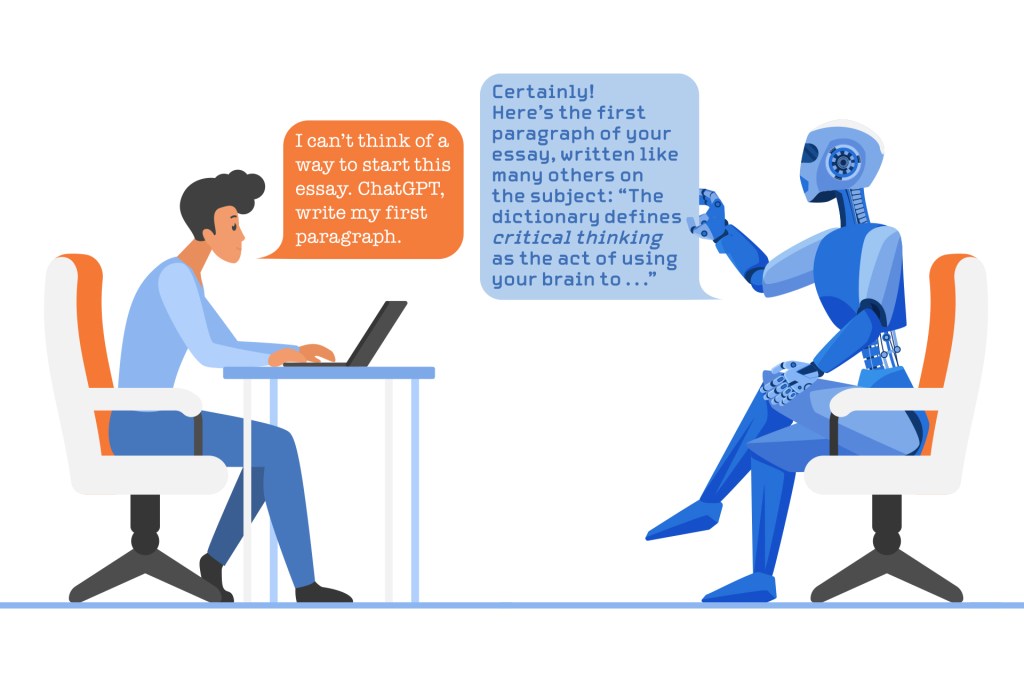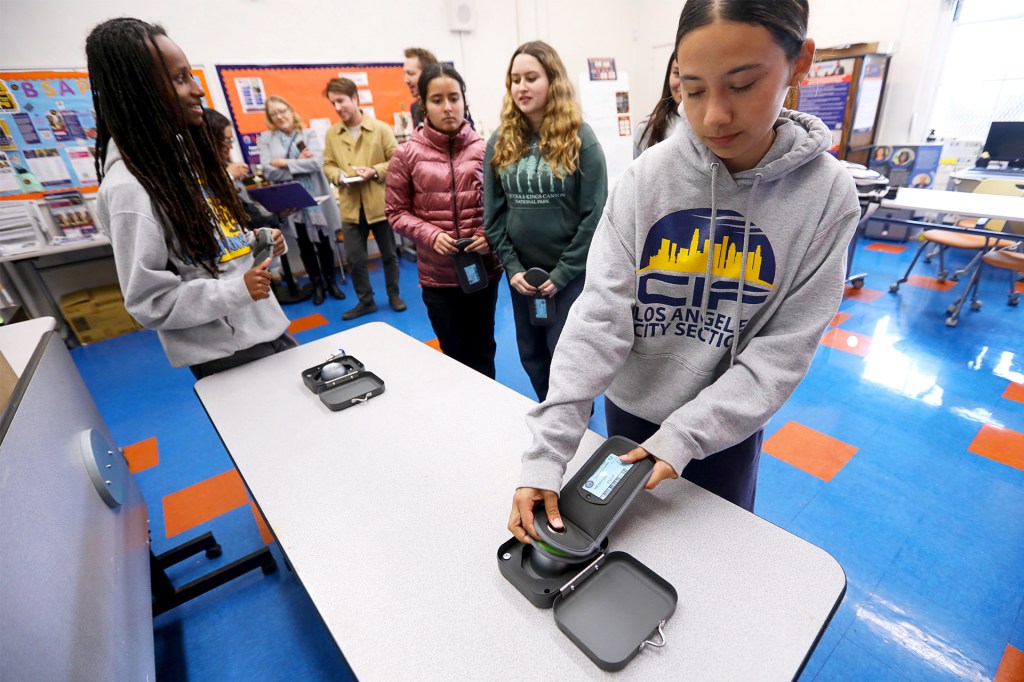Speak, FIDO!
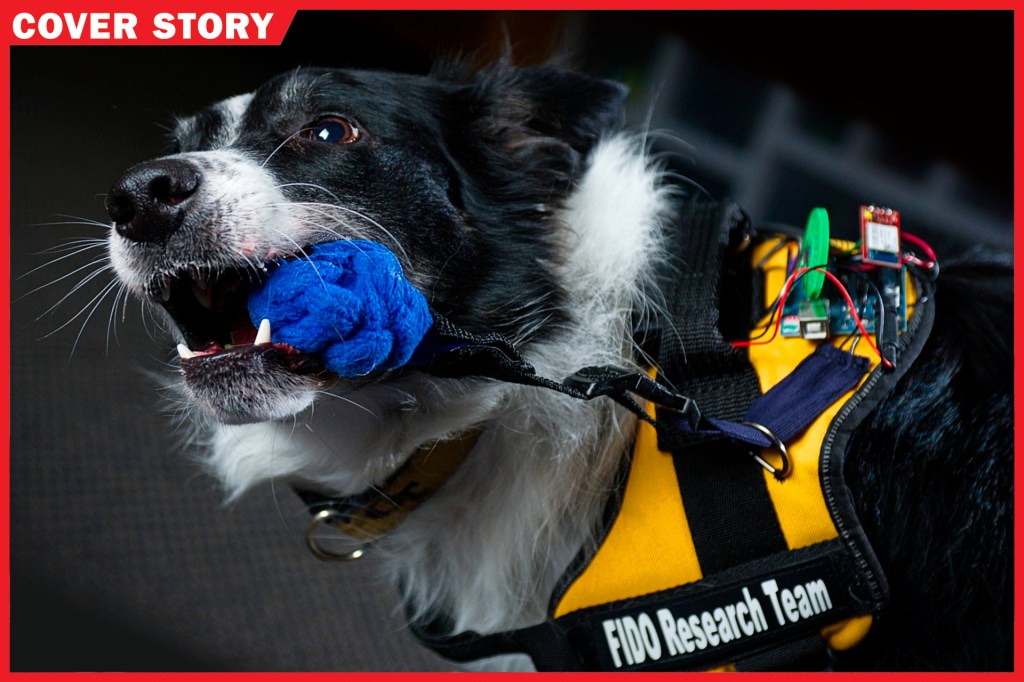
Imagine you’re out for a walk with your family when a strange dog approaches you. The dog isn’t aggressive
aggressive
 SIMONKR—GETTY IMAGES
ready and willing to fight; forceful
(adjective)
Sometimes, hockey players act aggressive on the ice.
, but it seems to want something. It nudges you with its snout, and barks.
SIMONKR—GETTY IMAGES
ready and willing to fight; forceful
(adjective)
Sometimes, hockey players act aggressive on the ice.
, but it seems to want something. It nudges you with its snout, and barks.
What you don’t know is that this dog is trained to help a person with a medical condition. Its owner has collapsed. The dog has run off to find help. That’s you! But how can the dog make you understand what’s wrong?
Now imagine the dog is wearing a high-tech
high-tech
 ARAND—GETTY IMAGES
involving new technology
(adjective)
The high-tech car is able to steer itself.
vest. There’s a rope attached: The dog uses its teeth to tug on it. This plays an audio recording. It says something like: “My owner needs help.” You’d know to follow the dog to its owner.
ARAND—GETTY IMAGES
involving new technology
(adjective)
The high-tech car is able to steer itself.
vest. There’s a rope attached: The dog uses its teeth to tug on it. This plays an audio recording. It says something like: “My owner needs help.” You’d know to follow the dog to its owner.
This is the goal of the FIDO project. That’s an ongoing study at the Georgia Institute of Technology.
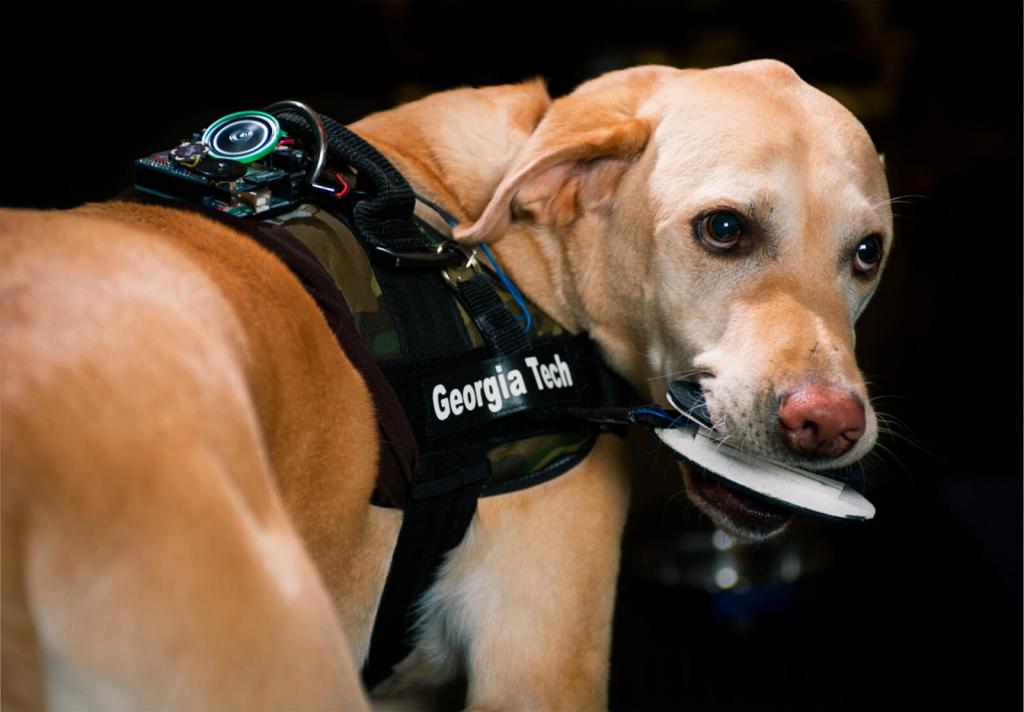
ALL BITE, NO BARK Schubert demonstrates the bite sensor on a FIDO project vest.
ROB FELTNew Tricks
Dogs can be trained to do many tasks. For example, epilepsy alert dogs fetch help if their owner has a seizure. Epilepsy is a condition that can cause a person to lose consciousness and twitch uncontrollably. Allergy dogs can smell a life-threatening allergen nearby. Diabetes dogs know when their owner’s blood sugar is dangerously low.
FIDO stands for Facilitating Interactions for Dogs with Occupations. The team wants to make it easier for working dogs to do their job. “Technology can give dogs so much more power as they help their humans,” Melody Jackson told TIME for Kids. She’s the director of FIDO.
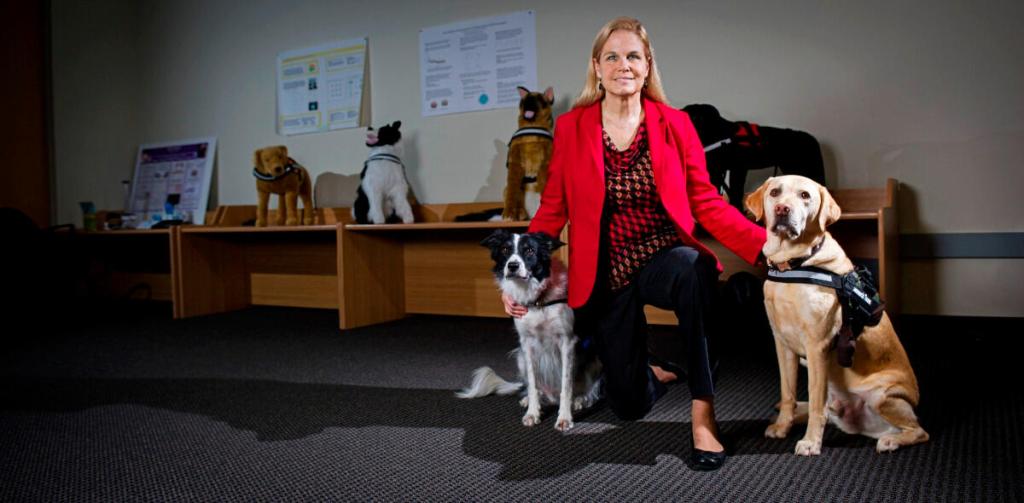
WOMAN’S BEST FRIENDS FIDO director Melody Jackson poses with her dogs Sky and Schubert.
ROB FELTFIDO researchers designed a vest with a tiny computer built in. It can call 911 or play an audio recording, among other things. The next step was to figure out how a dog would activate
activate
 MIKROMAN6—GETTY IMAGES
to cause something to start working
(verb)
My little sister stomped her feet to activate the flashing lights on her shoes.
it.
MIKROMAN6—GETTY IMAGES
to cause something to start working
(verb)
My little sister stomped her feet to activate the flashing lights on her shoes.
it.
The team made several sensors and put them on a prototype
prototype
 SKYNESHER—GETTY IMAGES
a model
(noun)
Before construction began on the bridge, the architects built a prototype.
. There was a touch sensor. It’s similar to the touch screen on a smartphone. A dog taps it with its nose. Another had a rope for the dog to tug with its mouth. There was also a proximity sensor. A dog activates it with a movement of its snout. Another sensor is activated when a dog bites down on it.
SKYNESHER—GETTY IMAGES
a model
(noun)
Before construction began on the bridge, the architects built a prototype.
. There was a touch sensor. It’s similar to the touch screen on a smartphone. A dog taps it with its nose. Another had a rope for the dog to tug with its mouth. There was also a proximity sensor. A dog activates it with a movement of its snout. Another sensor is activated when a dog bites down on it.
“Then we tested them all with all types of dogs—everything from a border collie to a basset hound to a poodle,” Jackson says. “We were able to train all the dogs to use all the sensors in 27 minutes or less.”
Work in Progress
For now, FIDO’s technology is being tested in the lab. Jackson is in talks with companies that are interested in making the devices. She hopes that soon, dogs will wear high-tech vests on the job. “How many dogs can use cell phones?” she says. “Well, ours can, and that means they can save a person’s life.”
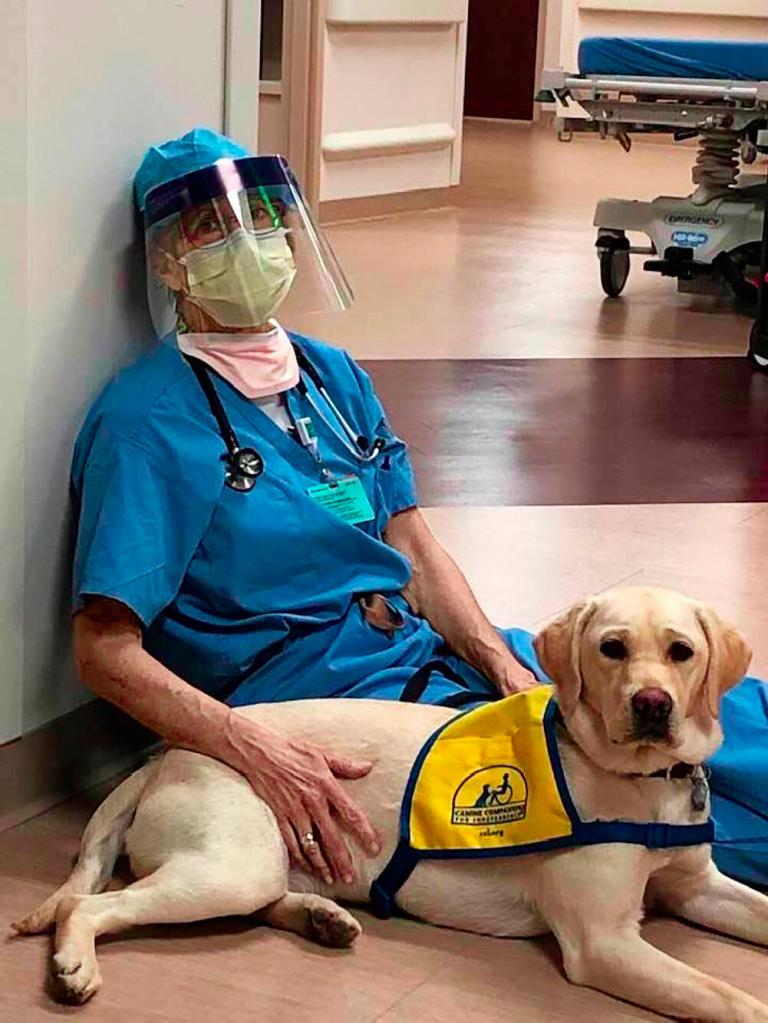
TIME OUT Dr. Susan Ryan takes a break with Wynn, a service dog in training.
COURTESY SUSAN RYANBest Medicine
Wynn is a year-old Labrador retriever. She’s training to be a service dog. Her handler, Dr. Susan Ryan, is an emergency doctor in Denver, Colorado. While Ryan works, Wynn hangs out in a hospital office. When COVID-19 hit, hospital workers felt anxious. Many started visiting Wynn. Ryan says petting Wynn helps manage stress. “We get anxious when we think about the future,” Ryan told TFK. “Wynn helps us return to the present.”





